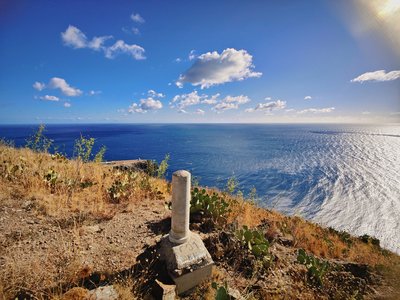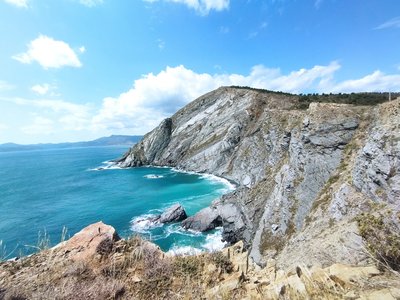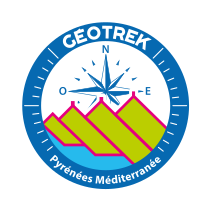Sentier littoral - Cerbère – Pic Cerbère

CERBERE
16. Sentier littoral - Cerbère – Pic Cerbère
Medium
0h45
875m
+207m
-36m
Embed this item to access it offline
2 points of interest

Camille Reynaud  Small patrimony
Small patrimonyboundary stone n°601
The boundary markers 601 and 601bis are part of the 602 boundary stones and crosses that delineate the Franco-Spanish border. These markers represent the last accessible land-based boundary points before the border reaches the Mediterranean Sea. The marker 602 is located in the Foradada Cave in the sea, between Cerbère and Port-Bou.
These boundary stones were established following the Treaty of the Pyrenees in 1659 and the Treaty of Bayonne in 1856, which set the current course of the border.
To reach boundary stone 601, one should follow the customs path (sentier douanier). Upon reaching the sign marking the end of the path section, continue straight ahead (following the yellow cross) rather than turning right onto the dirt track. This will bring you to the boundary stone, allowing you to experience this historical marker along the French-Spanish border.
Elisabeth Coste  Geology
GeologyThe cliffs of Cerbère
The Cliffs of Cerbère are among the highest in Europe and are part of the Banyuls to Cerbère Ecological and Faunistical/Floral Natural Area (Zone Naturelle d'Intérêt Ecologique Faunistique et Floristique des Falaises de Banyuls à Cerbère). Located in the southern part of the Côte Vermeille, this protected area stretches across 7 kilometers of coastline between Banyuls-sur-Mer and Cerbère, covering 140 hectares.
This rugged coastline is oriented from north-northwest to south-southeast and is predominantly made up of schist. The cliffs are sharply cut and are followed by numerous reefs and underwater islets. Several prominent capes punctuate the coastline, including the Cap de l'Abeille, Cap Redéris, Cap de Peyrefite, and Cap Canadell, which demarcate several sandy coves. The most significant of these is Peyrefite Beach.
The summit plateaus are covered with Mediterranean vegetation, including grasslands and maquis scrubland, which are often intersected by temporary streams. This diverse and ecologically significant landscape is a haven for a wide range of plant and animal species, making it an area of great natural interest.
Description
- After the solar lighthouse, the path winds and climbs along the cliffs through cists, heather and broom in order to reach the border of Pic Cerbère which offers a magnificent view of the cliffs of Cape Falco, and the villages of Llancà, Port de la Selva and Cap de Creu. To reach Cerbère, return by the same road.
- Departure : Solar lighthouse
- Arrival : Cap Falco’s Cliffs
- Towns crossed : CERBERE
Altimetric profile
Recommandations
You enjoy nature, You like it, take care of it...
Along the hiking trail, rubbish bins are at your disposal.
Every month over tens of thousands of hikers and walkers visit this exceptional site. Please do not litter and use the rubbish bins (glass, plastic, rubbish etc...). Also, please dispose of any litter you might find along the trail.
Help keep this site clean with simple yet essential gestures. Lets give back to nature what nature gave us
Transport
Town hall
Access and parking
By the RD 914, possibility of parking at the beachfront’s car park
Parking :
Cap Cerbère’s car park
